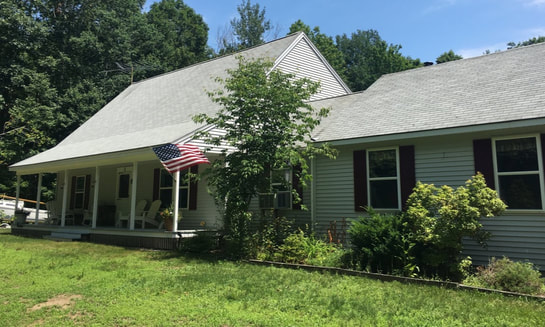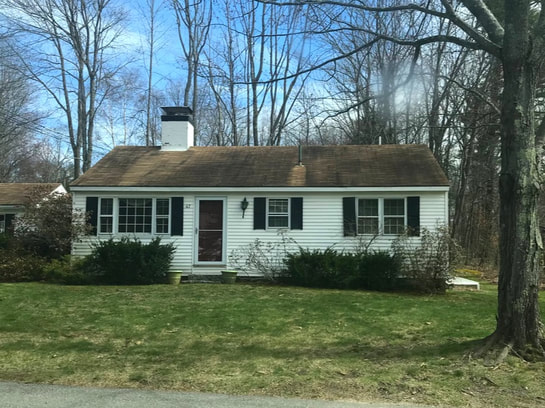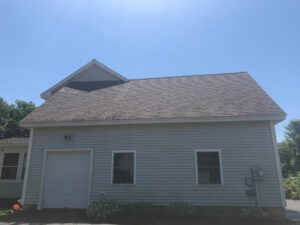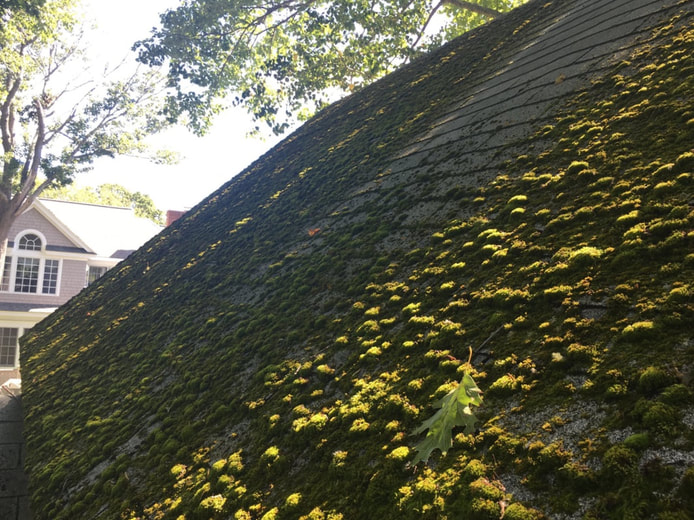 Before Treatment
Before Treatment
 After Treatment
After Treatment
We can safely and effectively remove any growth from your roof, restoring your home’s curb appeal and adding years to the lifespan of your roof.
Did you know that those black streaks on your roof are actually a type of bacteria called Gloeocapsa Magma? Did you also know that if left untreated, it will cause damage to your roof, requiring a premature roof replacement? Let’s answer some commonly asked questions about Gloeocapsa Magma, and other organisms that live on roofs.
“So, what causes this stuff to grow on my roof?” Since the 1980s, roofing manufacturers have been using limestone in asphalt shingles as a filler material for the product. The limestone provides the perfect environment with plenty of food for Gloeocapsa Magma, lichen, moss and other algae. Gloeocapsa Magma starts growing from a single spore that lands on your roof from a nearby tree or even from a neighbor’s roof, then begins to multiply. The rain actually drags the spores down the roof, which spreads the growth and creates the ugly black streaks commonly seen.
“Well, what’s so bad about these organisms living on my roof, they can’t hurt much can they?” Actually, yes! Since they feed on the limestone in the shingles, these organisms are quite literally eating away at your roof. This leads to a complete roof replacement if left untreated! It’s also a huge eyesore to what may otherwise be a beautiful home. A roof in poor condition will reduce your homes curb appeal and resale value, and result in leaks which cause thousands in water damage. Further, most insurance companies consider a roof that is unkempt reason enough to increase your premiums or drop your policy altogether.
“Okay, so how do we get rid of it?” Fear not, all of these damaging organisms can be safely removed, and we will make sure of it. The treatment process requires specialized equipment, which applies a chlorine-based solution onto your roof at a low pressure. Our dedicated equipment uses less pressure than a typical garden hose, so there will be no damage done to any roofs we clean. You’ll gain peace of mind knowing that you are extending the lifespan of your roof and saving thousands in future repairs and replacement costs.
“Will the treatment hurt my plants and my lawn?” While any chemical does have the potential to cause damage to plants and surrounding areas if used carelessly, we ensure safe handling and application of the product, preventing any harm to your property. Rest assured, our trained experts will deliver safe and effective results.
“What if I have moss or lichen on my roof?”
Frequently, when moss is present, so are leaves, pine needles, sticks and other debris. We first remove the majority of this debris prior to applying our chemical treatment. This ensures that the chemical can effectively penetrate the moss growth. The biggest difference in treating moss, is the time that it takes to achieve the final result. Larger organisms like moss and lichen have much more developed root structures. During the initial treatment, the chemical begins to kill the moss signified by it turning white. A few weeks later the roots will begin to dry up and release from the roof. Rain will then assist the removal process the rest of the way, rinsing the dead organisms from the roof. This whole process can take anywhere from a few weeks up to 6 months or more depending on how developed the growth is. Some roofs with heavy amounts of growth will require a re-treatment after a few months to remove any remaining organisms.
Don’t wait until your roof is damaged beyond repair! Contact us for a free estimate to clean your roof!



















